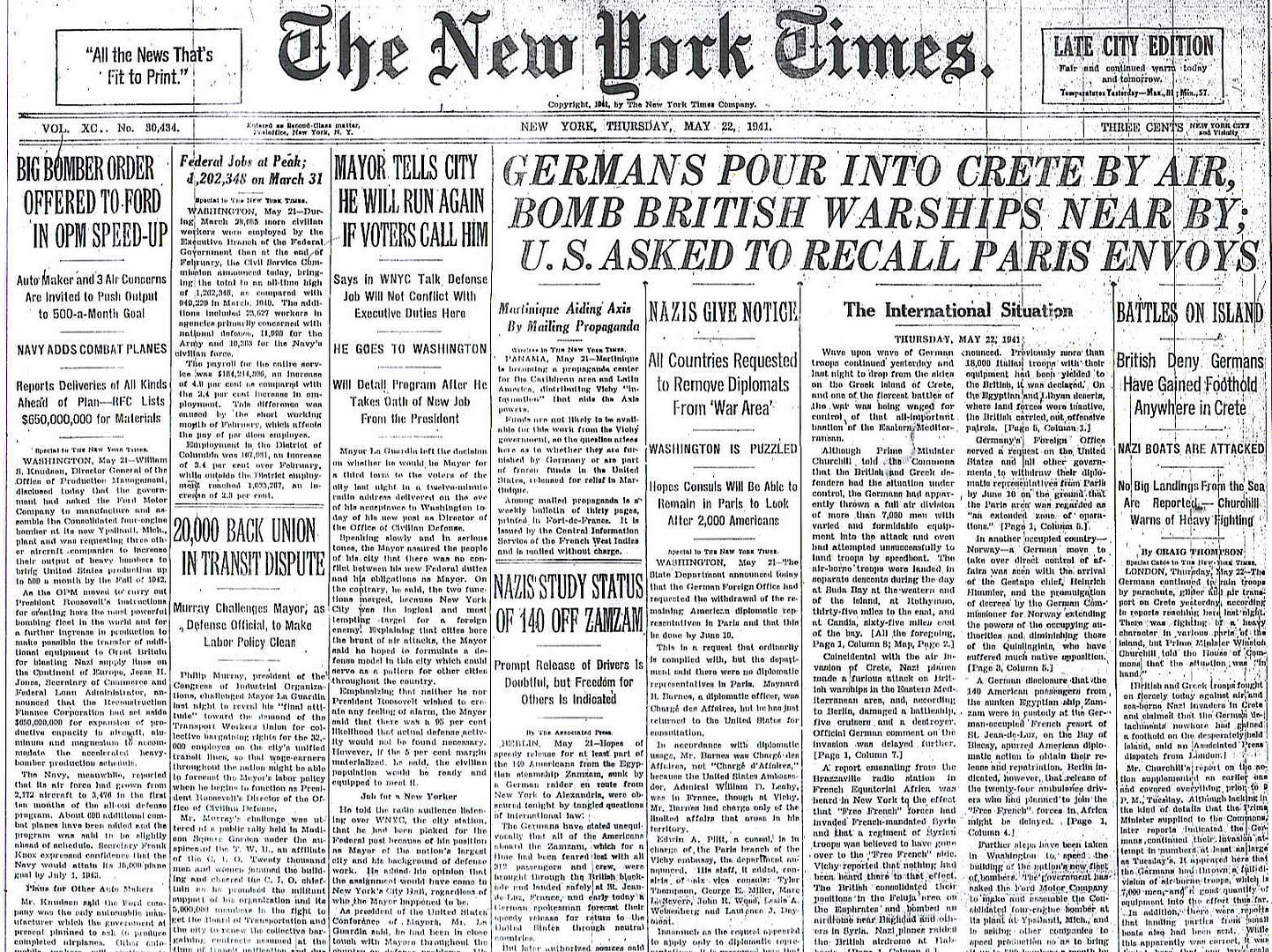
Posted on 05/22/2011 5:58:15 AM PDT by Homer_J_Simpson

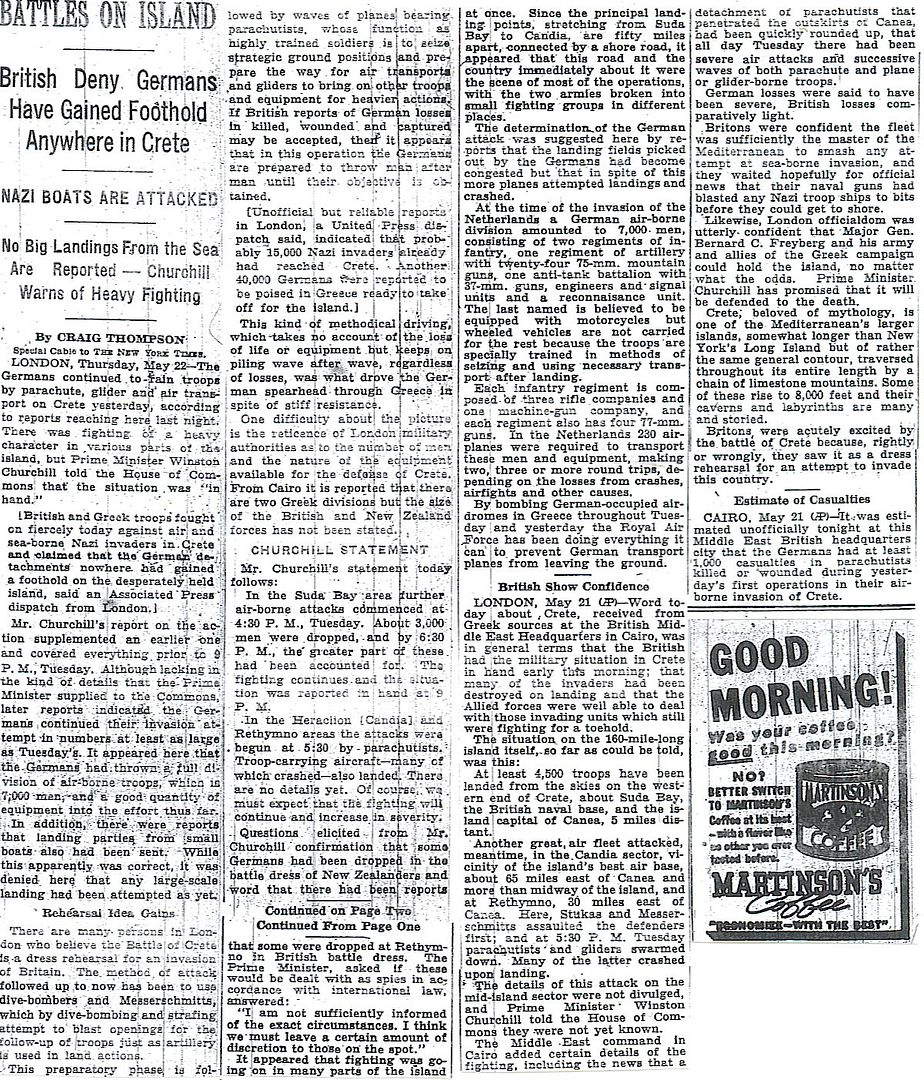
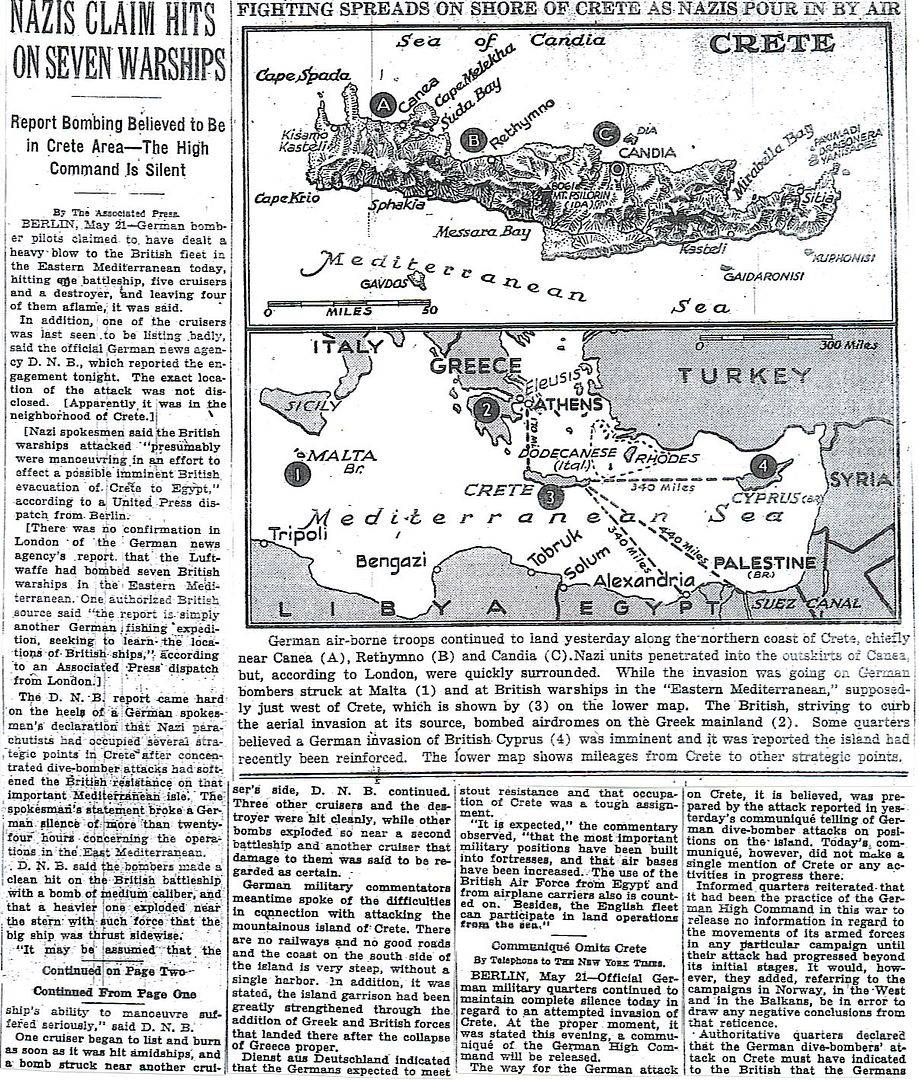
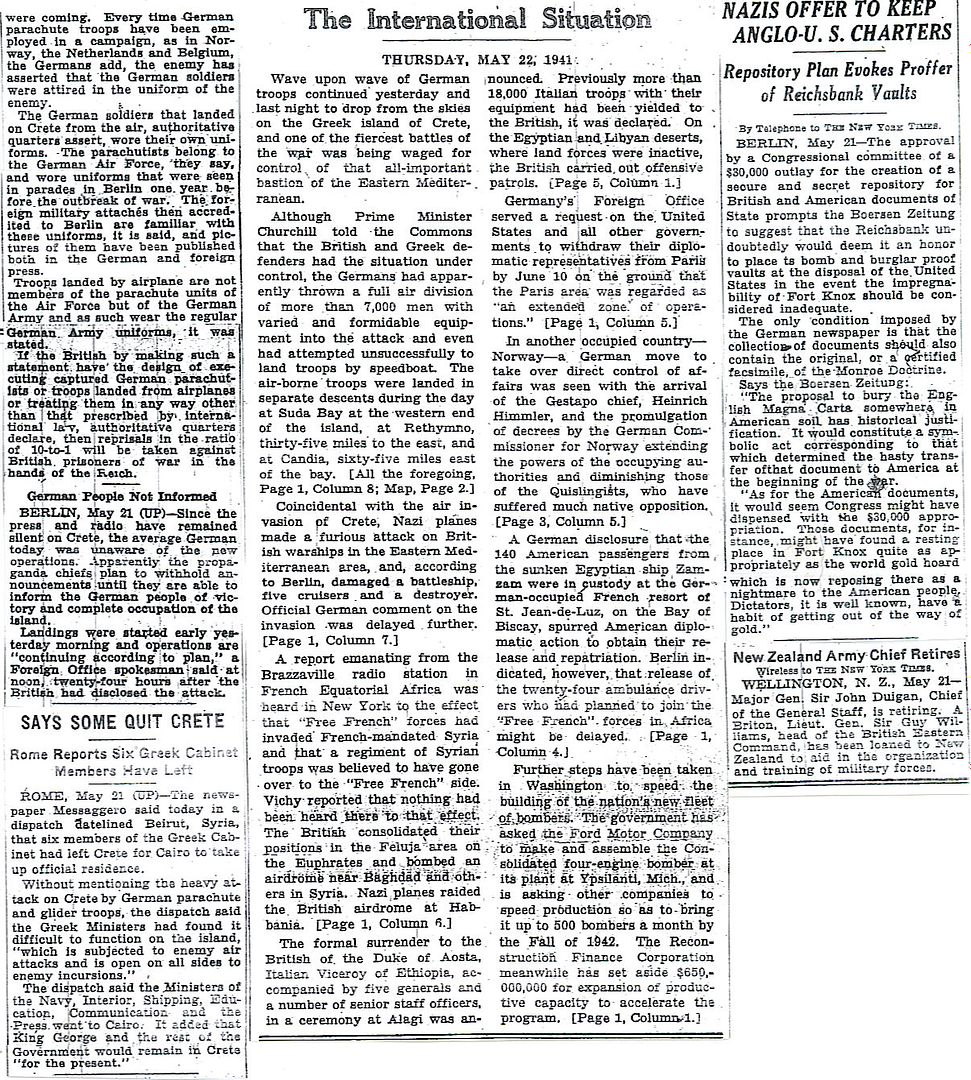
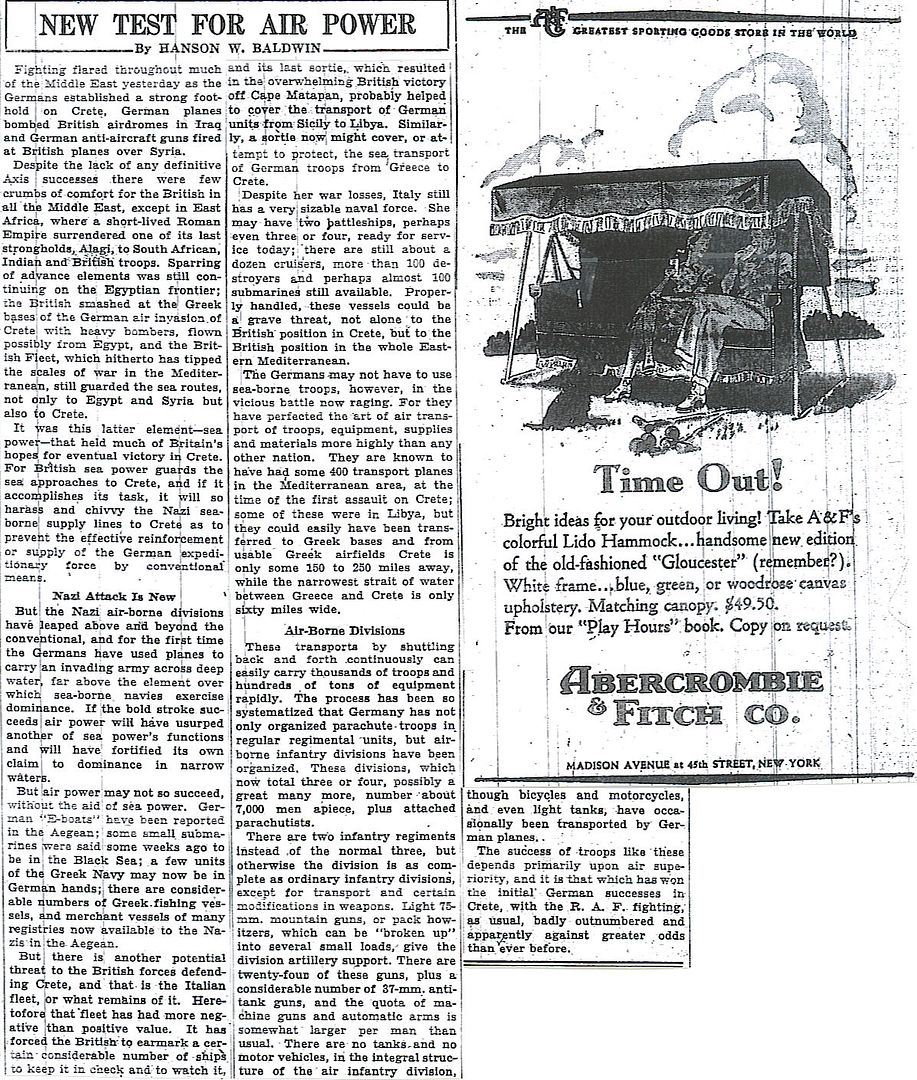
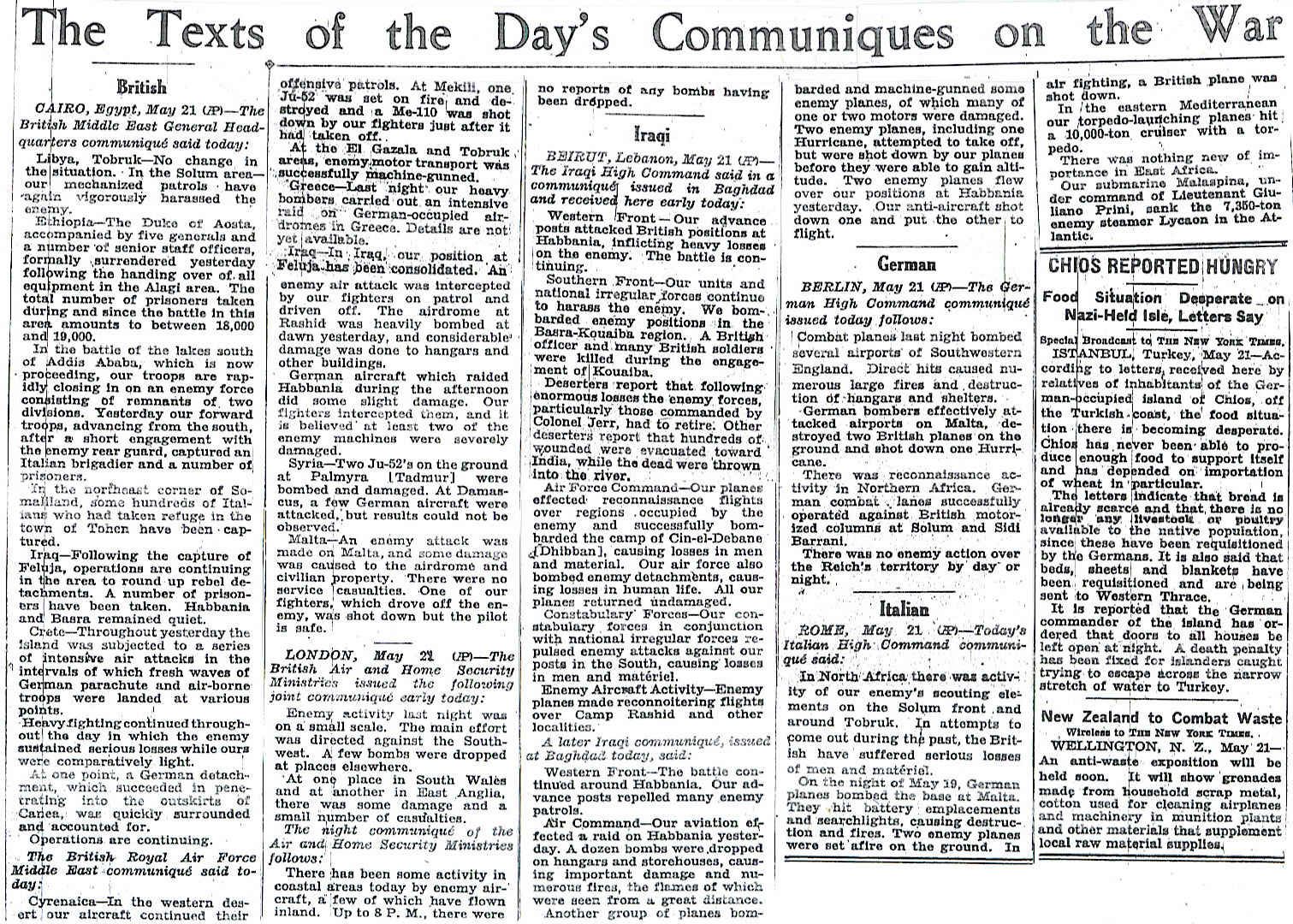
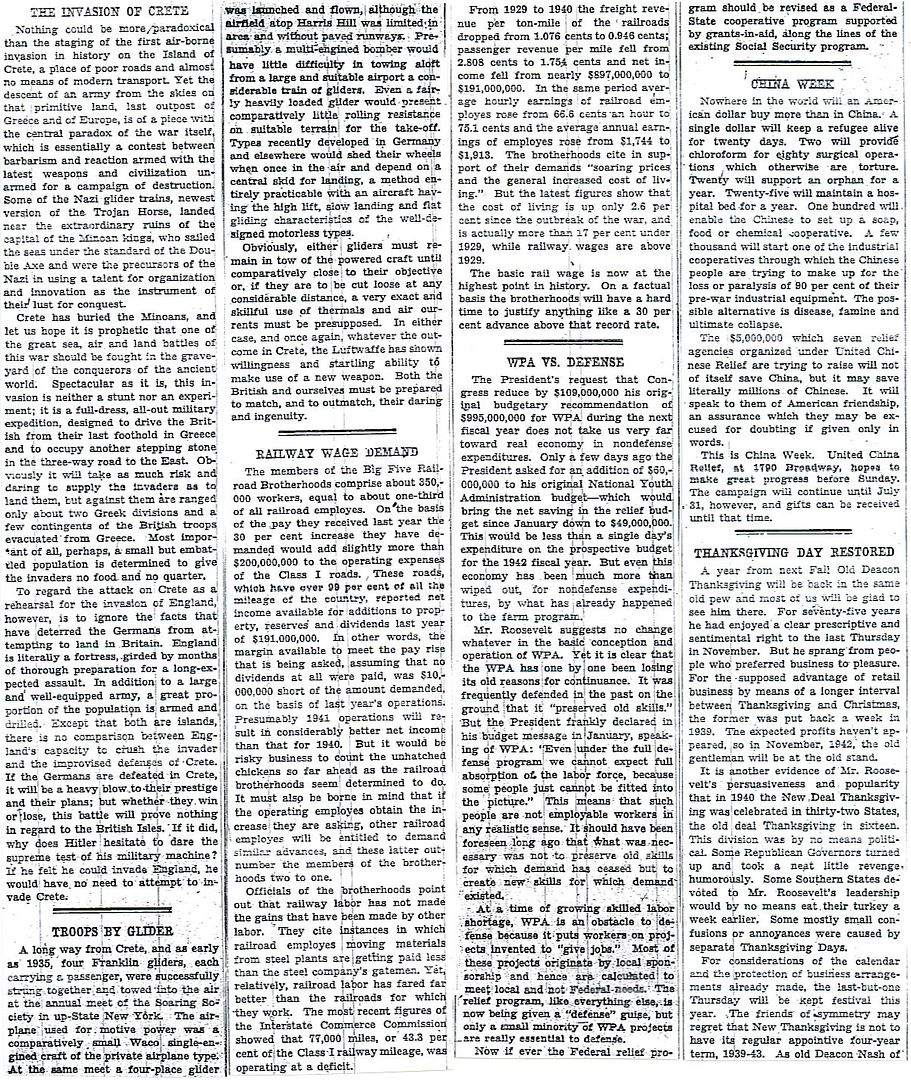
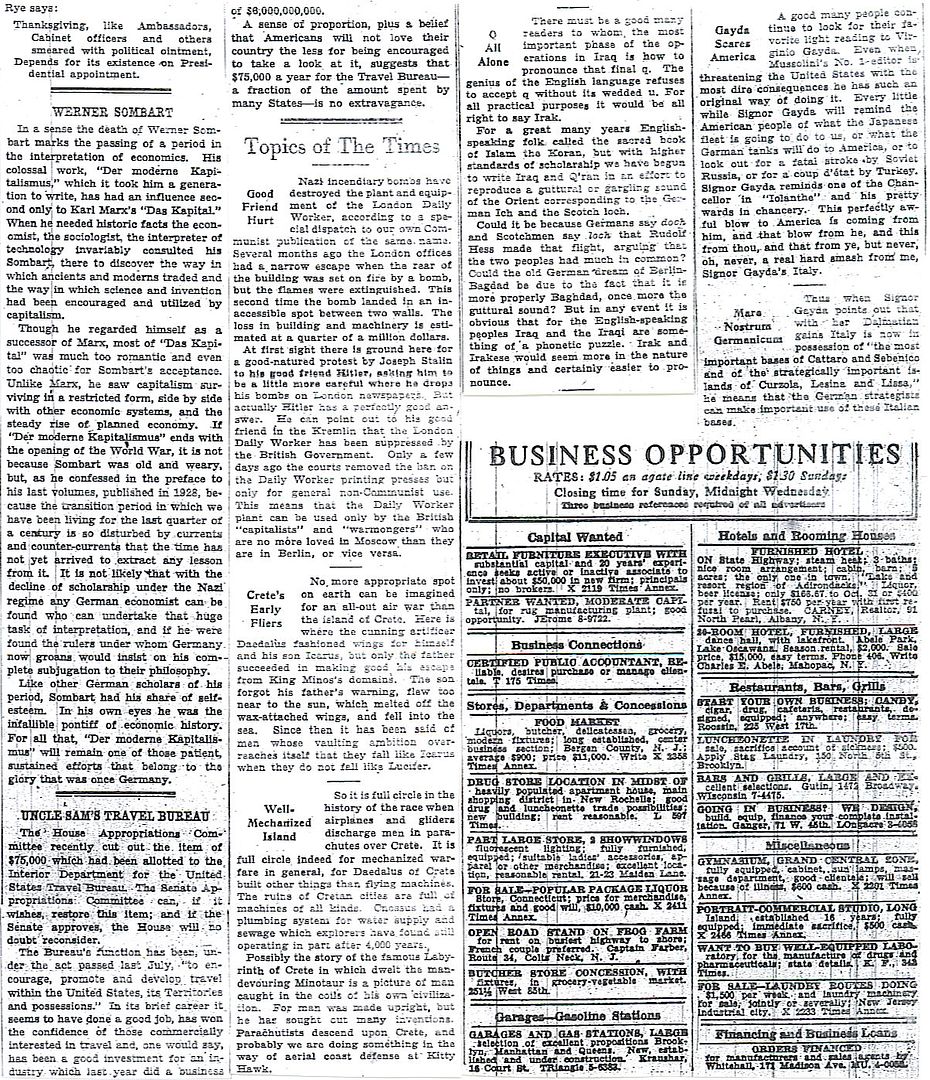
With good reason. That finally sank in for me a while back when I re-read the chapter in Wouk's The Winds of war that covers this period. The main characters are discussing the matter on May 26. Captain Henry says, ". . . unless the Bismarck is undamaged. In which case heaven keep any convoys she runs across. With that fire control she displayed, she'll pick off forty ships in half an hour."
For the first time I thought about the impications of that line. It means Bismarck could wipe out an entire convoy just like that. Britain couldn't afford to lose a whole convoy. Once would be a catastrophe. A second might have had them sending feelers to Berlin. That is what is at stake in the battle now beginning.
Try this one. If Raeder had waited until TIRPITZ was ready, he would have had BISMARCK, TIRPITZ, PRINZ EUGEN, GNIESENAU, and probaly SCHARNHORST available for joint operations. Interesting problem for Tovey, no?
Convoy Disaster Off Crete
Since there were not enough aircraft to carry out both the initial landing and the rapid build up of forces on the island, a flotilla of 63 requisitioned Greek vessels had been put together in advance of the attack to carry part of the 5th Gebirgs Division to the island.
Most of these commandeered vessels were caiques - a type of fishing boat dependent on a sail and a small auxiliary engine - and the rest of them a motley mix of coastal freighters.
There were to be two flotillas; one was to carry some 2,300 Gebirgsjager to Maleme; the other to carry 4,000 to Heraklion.
On the night of 19 May, the first flotilla arrived at the island of Milos and anchored there. But with the situation on Crete grown critical, a change of plan occurred and both convoys were ordered to sail to Maleme. The first convoy departed on 20 May escorted by one small Italian corvette. At around 22:00, making only 7 knots, and still some 18 miles from the landing beaches at Maleme, they were picked out by the probing searchlights of a British naval task force led by Admiral Rawlings.
Unknown to the ships crews, they had been spotted that aftemoon by a British reconnaissance aircraft. For two and a half hours the British hunted the caiques and freighters down, sinking 12 of them. The survivors straggled back north towards Greece, leaving many of the Gebirgsjager floating in their Iifejackets in the warm waters.
The III Battalion of the 100th Gebirgsjager Regiment was decimated by the naval action and virtually disappeared as a fighting force. In the moming, Italian boats and planes mounted a rescue effort, and as the Ju52s resumed the airlift of the 100th Gebirgsjager Regiment into Maleme, the troops in the planes dropped life-rafts to their comrades below.
Some 178 survivors were rescued by seaplanes and another 64 by launches. By 16:00 in the afternoon on 22 May, the rescue effort had been completed, and miraculously only 300 of the 2,331 on board the ill-fated flotilla were dead. A few managed to reach land, suffering from exposure but still carrying their weapons!
The second flotilla set sail southwards from Milos on 22 May. At about 09:30 they came within range of another naval task force under Admiral King, but were saved by the timely arrival of Luftwaffe aircraft that forced King to break off the attack. This second flotilla was recalled to spare it the same fate as the first, and no further seabome landings were attempted until the island was in German control.
22 May saw renewed action by the Luftwaffe against the British naval task forces in which two cruisers and a destroyer were sunk, and two battleships and two cruisers damaged. After these attacks, Admiral Cunningham, commander of the Meditenranean fleet, decided that he could not risk further losses by operating during the day near Crete or in the Aegean Sea, and withdrew.
By midnight on 22 May, the whole of I Battalion of the 100th Gebirgsjager Regiment had been brought in, followed by II Battalion, I Battalion of the 85th Gebirgsjager Regiment and then the 95th Gebirgs Engineer Battalion under Major Schatte.
That evening the 5th Gebirgs Division's commander, Generalmajor Julius Ringel, flew in with orders to clear the British out of Crete. He assumed command of all forces in the Maleme area, and set about organising the forces there into three Kampfgruppen (battle groups). Kampfgruppe Schatte was to protect the Maleme area from any westem threat and push westwards to capture Kastelli. A second group, made up of paratroops under command of Oberst Ramcke, was to strike northwards to the sea to protect the airfield and then extend eastwards along the coast. The third, under the command of Oberst Utz, was to move eastwards into the mainland, in a flanking movement across the mountains.
The New Zealand commanders had already opted to withdraw to strengthened positions in readiness for the German advance, but in effect, as Freyberg's chief of staff later remarked, 'this amounted to accepting the loss of Crete'.
On 23 May, the three battle groups moved cautiously forward. I Battalion of the 85th Gebirgsjager Regiment headed eastwards of Kampfgruppe Utz and reached the village of Modi in the aftemoon, where it was engaged by New Zealand troops. To outflank the enemy position, I Battalion of the 100th Gebirgsjager Regiment marched across the mountains to the south, and after abrisk fire fight the village fell.
Next, advancing up the bare slope of a tactically important position known as Hill 259, the Gebirgsjager fought hand-to-hand with the New Zealand defenders. During the night they pulled back to avoid being cut off, and moved their artillery back southeast of Platanias. As a result of these actions, Maleme airfield was left virtually undefended.
On each line of advance, the German troops were harried incessantly by Greek and Cretan irregulars. Numerous reports were already circulating that these bands had carried out atrocities on the German dead and wounded - some of whom were apparently tortured before dying. Then, on the west of the island, the 95th Engineer Battalion came under attack from armed civilians (including women and children), and as aresult the 5th Gebirgs Division announced that henceforth, for every German soldier killed in this fashion, 10 Cretans would be shot in reprisal. The Luftwaffe also dropped leaflets waming the population of the measures that would be taken against partisan activity.
5th Gebirgsjager Division-Hitler's Mountain Warfare Specialists by Michael Sharpe
German soldiers survey the beached wreck of the cruiser York
Great photo!

The elegant lines of KMS Prinz Eugen, armed with eight 8in. guns, mounted in four twin turrets. From a distance she looked similar to KMS Bismarck, which caused problems for British gunnery directors during the battle of the Denmark Strait.
Bismarck - Radar
FuMO 23 Radar
http://www.battleshipbismarck.com/bismarckclass/layout/13_bismarck_radar.php

Detail of the foretop command post with its rotating dome over it. 1/100 Model of Markus van Beek.
The fire of the main and secondary batteries was directed from the command posts, which were located forward, astern, and above the foretop platform. Each of these three posts mounted a rotating dome with an optical rangefinder and a FuMO 23 radar instrument. The command posts were connected by armoured communication shafts to the computation rooms under the armour deck forward (section XV) and aft (section VII). The FuMO 23 antennae had a rectangular shape and measured approximately 2 m. high and 4 m. wide. They had a frequency of 368 MHz, and operated on an 81.5 cm wavelength with a power-output of 9 kW at 500 kHz. The maximum effective range of this device was about 25,000 m. However, the German FuMOs were not equipped with the PPI (Plan Position Indicator) display system that is so familiar in today’s radars, but a simple A-scope display instead. Therefore, they could hardly detect more than one target at the same time, and bearings were not very accurate either. The lack of PPI was one of the reasons German capital ships were so redundant and equipped with three sensors.
The foretop command post, under the command of the First Artillery Officer (I.A.O.), was above the foremast, at about 31 meters above sea level. It was equipped with a 10.5 meter base range finder (Basisgerät BG), and had a visual field of 360º. The forward command post was attached to the forward conning tower, and had a 7-meter base rangefinder, however, due to the superstructure, its visual field was smaller. The after command post had a 10.5-meter base rangefinder of similar characteristics as the one in the foretop.

Bismarck Rangefinder. This is the aft rotating dome over its command post. This station was under the command of the Fourth Artillery Officer, Kapitänleutnant Burkard von Müllenheim-Rechberg who was one of the few survivors from the ship.
Each of the four main battery turrets ("Anton", "Bruno", "Cäsar" and "Dora") was equipped with a 10.5-meter base rangefinder too, and in case all three command posts were put out of action in battle, the turrets could then proceed individually to local fire.1 However, the chances of scoring a hit with each battery firing on its own were less than under a centralized command. The central turrets of the secondary battery had also their own 6.5-meter base rangefinder. The anti-aircraft fire was directed by four command posts, each equipped with a 4-meter rangefinder. Two of these command posts, covered by spherical cupolas (Wackeltopf), were on either side of the foremast, and the other two uncovered posts amidships aft.
Shooting methods were different on each navy and depended on the number and type of guns, the distance to the target, and the type of rangefinder utilized. In order to find the range as fast as possible, on the Bismarck it was customary to open fire with three partial salvoes in rapid succession, set at different ranges, so that all three were in the air at the same time. Let's say turret "Anton" first, two seconds later turret "Bruno", and then turret "Dora". After observing the fall of this first group, the Artillery Officer had to introduce the necessary corrections and usually with the second group the target was already straddled. Once the correct range and inclination was obtained, then they could fire full salvoes with all eight guns, or partial salvoes with either the fore or after turrets.
I'm not sure that KMS was a proper designation for the ships of Nazi Germany. It's my recollection they just went by their names. Folks?
Perhaps an abbreviation of Kreigsmarine?
http://en.wikipedia.org/wiki/Kriegsmarine
Most of the older books in my library (1960s thru 1980s) don’t use that designation much. It seems more popular on the internet websites of the vessels.
Just looking at one reference volume now - it doesn’t use the designation.
Battleships: Axis and Neutral Battleships in World War II William H., Jr. Garzke, Robert O., Jr. Dulin
http://www.amazon.com/Battleships-Axis-Neutral-World-War/dp/0870211013
I honestly don't know.
btw:check out this page from Global Security Org about German cruisers.
Watch out - appears to be malware at that link.
From Wikipedia’s naming conventions:
Do not make up a ship prefix for a navy that did not use one. Thus:
* German battleship Bismarck (not “DKM Bismarck”)
* Japanese battleship Yamato (not “HIJMS Yamato” or “IJN Yamato”)
* Italian battleship Giulio Cesare (not “RM Giulio Cesare”)
* Russian aircraft carrier Admiral Kuznetsov (not “RFS Admiral Kuznetsov”)
Some authors use invented prefixes for consistency with “USS”, “HMS” etc. It is not a mistake to do that, but at Wikipedia we choose not to. To forestall attempts to move articles to the wrong place, you might want to add redirects from popular invented ship prefixes. So the article Japanese battleship Yamato could have redirects from IJN Yamato and HIJMS Yamato.

On completion of these duties she participated in the Battle of Crete. On 22 May 1941 she was acting in company with the destroyers HMS Kandahar and HMS Kingston shortly after the loss of HMS Gloucester. These ships fought on and shot down one attacker and damaged two others. She finally expended all of her AA ammunition fighting off numerous air attacks that persisted for two hours. She was attacked and hit by several bombs from Messerschmitt Bf 109s before an aircraft of Jagdgeschwader 77 dropped a bomb close alongside to port. This blew in Fiji’s bottom plates and caused a list to port. Fiji lost power and came to a standstill. She was now largely defenceless, having practically exhausted her 4 inch ammunition. She was then hit by three bombs dropped by a Junkers Ju 88 from Lehrgeschwader 1 piloted by Gerhard Brenner. Captain William-Powlett gave the order to abandon ship and at 2015 Fiji rolled over and sank. The destroyers dropped floats and withdrew to the south. They returned after dark to pick up 523 survivors. 241 men had gone down with the ship.
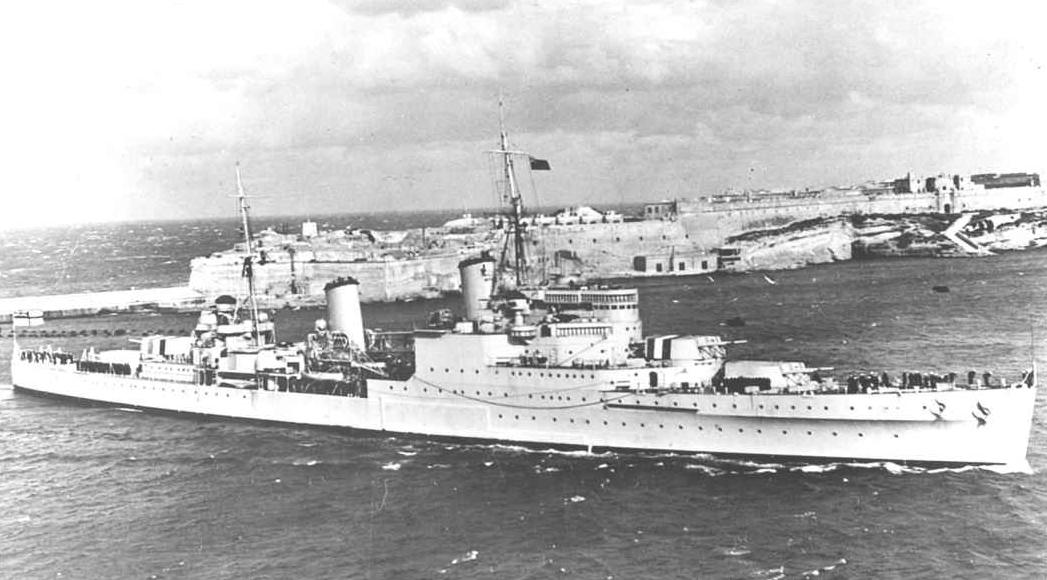
Gloucester formed part of a naval force acting against German military transports to Crete, with some success. On 22 May 1941, while in the Kithera Channel, about 14 mi (12 nmi; 23 km)14 miles (26 km) north of Crete, she was attacked by German Stuka dive bombers and sank, having sustained at least four heavy bomb hits and three near-misses. Of the 807 men aboard at the time of her sinking, only 85 survived.[4] Her sinking is considered to be one of Britain's worst wartime naval disasters.

During the invasion of Crete, Greyhound escorted the battleship HMS Warspite west of Crete on 22 May as she covered the cruiser forces attempting to sink the German invasion convoys. The ships were en route to rendezvous with the cruisers when she was struck by three bombs dropped by Stukas of StG 2 and sank a few minutes afterwards.[13] Her survivors were rescued by the destroyers HMS Kingston and HMS Kandahar, but six officers and 74 sailors were killed in the attack. The Germans later rescued four more sailors.[6]
http://www.hmshood.com/history/denmarkstrait/bismarck1.htm
The Veil is Lifted
Back at Scapa Flow on 22 May, Tovey was now faced with a decision about whether to sail himself. If the German fleet had left Bergen, they may already be nearing a breakout into the Atlantic. If he delayed sailing, then he may not be in time to assist in the battle to prevent the German breakout. On the other hand, if he sailed now and Bismarck was still waiting at Bergen for an improvement in the weather, he may find himself returning to port for lack of fuel at a critical moment.
To Tovey’s assistance came the small Naval Air Training Station at Hatston, Scapa Flow. The commanding officer, Captain Henry St. John Fancourt, thought it possible for a single aircraft to fly to Bergen to ascertain whether or not the German ships had sailed. Lieutenant Noel Goddard volunteered to pilot one of the base’s Marylands that were used for target towing. Accompanying Goddard would be the highly experienced navigator and observer Geoffrey Rotherham. Tovey’s permission for the venture was obtained, and at 1630 hours the aircraft took off. After a daring flight close to the sea, Goddard and Rotherham arrived at Bergen to find that the German vessels were no longer there. An urgent message was sent back to Hatston that Rotherham was able to confirm in person when he returned just before 2000 hours that evening.
So Admiral Tovey was at last certain that the German ships were no longer at Bergen, but the uncertainty about enemy intentions still remained. Various explanations could be offered about what might be taking place:
The German ships may be leading a convoy containing important stores or troops to northern Norway.
They may be part of a raiding force bound for Iceland.
They may be attempting to break out into the Atlantic.
He felt that the last possibility was still the most likely. It was also the one that posed the greatest potential risk. Tovey knew that the German ships would wreak havoc on the convoys if they were to succeed in breaking out into the Atlantic. Also, once out they would be almost impossible to track down. They had to be stopped before they got into the Atlantic.
New plans were urgently formulated to give the Home Fleet the greatest possibility of intercepting the German ships before they broke out. It had been 29 hours since Bismarck had last been sighted at Bergen – depending on when they had sailed, they may, even at that moment, be close to achieving their Atlantic objective. The following directions were issued to update Tovey’s previous disposition orders:
Suffolk at Hvalfjord, was ordered to sail immediately to join with RADM Wake-Walker in Norfolk, on patrol in the Denmark Strait.
The cruiser Arethusa, also at Hvalfjord, was to join Manchester and Birmingham. The three cruisers were to patrol the Iceland/Faeroes passage.
VADM Holland’s squadron of Hood, Prince of Wales and the destroyer screens were on their way to Hvalfjord to refuel before commencing their patrol. They were now ordered to proceed immediately to their patrol. They were to operate north of 62 degrees latitude and would be ready to react and cover the German ships should the cruisers patrolling either the Denmark Strait or the Iceland/Faeroes passage locate them.
Tovey himself sailed from Scapa Flow in his flagship King George V at 2245 hours on 22 May. They were accompanied by the aircraft carrier Victorious, the cruisers Galatea, Aurora, Kenya, and Hermione. The squadron also included seven destroyers (Inglefield, Intrepid, Active, Punjabi, Windsor and Lance). The group would be further reinforced off the Butt of Lewis when the battle cruiser Repulse and three more destroyers joined from the Clyde.
This latter squadron would act as a further backstop, operating behind Hood and Prince of Wales, south of the line of 62 degrees North latitude. Tovey gave consideration to detaching two of the cruisers of his squadron to patrol the Faeroes/Shetlands passage but decided against this. The chance of this passage being used by the German ships was small due to the proximity of the Home Fleet base at Scapa Flow in the Orkneys.
The naval units would be supported in their search by air reconnaissance patrols between Greenland and the Orkneys as well as sweeps along the Norwegian Coast.

Here is another take on those same events:
"On the other side of the Atlantic, Adolf Hitler was taking great pains to avoid a clash with the United States.Greaves Jr, Percy (2010). Pearl Harbor: The Seeds and Fruits of Infamy Chapter 3
On April 25 he cautioned his naval forces that'all incidents with American ships be avoided.'
The commander-in-chief of his navy, Admiral Erich Raeder, was pushing for aggressive action against the United States."Hitler answered Raeder at a conference on May 22, ordering that
'Weapons are not to be used.
Even if American vessels conduct themselves in a definitely unneutral manner. . . . Weapons are to be used only if US ships fire the first shot.' ”
According to the 1944 testimony of Navy Captain Laurence F. Safford of the security (intelligence) section of the Navy’s communications division, in Washington:
Safford "was able to recall in considerable detail many of the important Japanese dispatches that had been intercepted, deciphered, translated, and read by top military and administration officials in Washington before the attack."As early as the spring of 1941 (May 22), they had received
'positive proof of Japanese plans for the conquest of Southeastern Asia and the Southwest Pacific.'
"Further indications of Japan’s plans for aggression in the southwest Pacific and against southeast Asia were picked up in September and October...."
quoted from: Greaves Jr, Percy (2010). Pearl Harbor: The Seeds and Fruits of Infamy Chapter 21
Capt. Safford worked in the Communications Division under Rear Adm. Leigh Noyes, who reported to the CNO Admiral Harold Stark.
Major Claussen lists Safford in his rouge's gallery of "who's to blame" for December 7, for Safford's failure to go into work that Sunday morning, even though Safford thought something was up.
Claussen does not find fault with Safford's boss Noyes, nor Noyes' boss Stark, nor Stark's boss, Secretary Knox.
As for President Roosevelt, Claussen calls FDR: "the ultimate victim of Pearl Harbor"
So much for Claussen.
So if the Germans really were winning the battle of the Atlantic they were doing so with a major self-imposed constraint. Didn't Hitler severely limit the number of U-Boats operating in American waters?
My understanding is that Hitler didn't fully appreciate the importance of his U-boats, or how close they came to winning the war for him.
But it wasn't just the lack of numbers, it's also the fact that German U-boats of WWII were not so advanced beyond those of WWI, until far too late in the war.
It's one of those great "what ifs", however, none of that was readily apparent in May of 1941.
Disclaimer: Opinions posted on Free Republic are those of the individual posters and do not necessarily represent the opinion of Free Republic or its management. All materials posted herein are protected by copyright law and the exemption for fair use of copyrighted works.